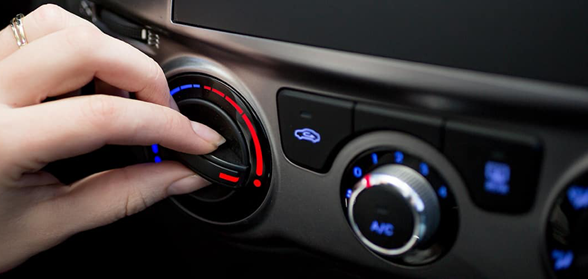Why Is Your Car Heater Blowing Cold Air?

Experiencing the inconvenience of a car heater blowing cold air? Here are seven potential culprits and their solutions:
Low Coolant Level
Your vehicle's heating system relies on coolant to absorb engine heat and warm the cabin. Over time, your car can run low on engine coolant, resulting in reduced heat absorption and the circulation of cold air through the heater.
Coolant Leaks
A coolant leak is a recipe for low coolant levels, causing your heater system to malfunction, and depriving your cabin of warm air. Keep an eye out for leaks in critical areas like the radiator, radiator cap, hoses, and water pump, as they are prone to wear and tear.
Broken Thermostat
A thermostat's primary role is to open and release coolant when the engine reaches a specific temperature. However, a malfunctioning thermostat may fail to open correctly, leading to inadequate heat absorption and the risk of engine overheating. It can also result in your car heater blowing cold air.
Air in the Cooling System
Air bubbles within the cooling system disrupt the flow of coolant, impeding the delivery of heated coolant to the heater core. This disrupted flow prevents the heater core from adequately warming the air passing through it. Several factors, such as air entering during a coolant change, cylinder head gasket issues, or a faulty radiator, can contribute to this problem.
Clogged Heater Core
The heater core relies on hot engine coolant to generate warm air, which is then circulated into the cabin by the heater fan. Unfortunately, debris can accumulate in the heater core's tubing, obstructing the flow of hot coolant and preventing the creation of warm air.
Jammed Blend Door
Within your car's heating system resides the "blend door," a crucial component that allows hot air from the heater core to enter the cabin. When this door becomes obstructed, cool air bypasses the heater core and enters the cabin without being heated. This obstruction can occur due to the accumulation of debris or issues with the blend door actuator, which regulates its opening and closing.
Broken Heating Controls
Two issues related to heating system controls can lead to your car heater blowing cold air:
Malfunctions in the heating control buttons can result in incorrect settings, affecting the heater's performance. Meanwhile, the heater control valve plays a pivotal role in adjusting the amount of coolant flowing to the heater core. If this valve malfunctions, it may not supply sufficient coolant to heat the incoming cool air, leading to cold air blowing into the cabin.
Diagnosing a Faulty Car Heater
If you can check the above components, you can diagnose where the heater problem is coming from. Alternatively, you can immediately bring your car to your trusted mechanic once you notice the issue.
They will inspect coolant levels, the engine temperature, the heater core, and the water pump. They will also assess the blower fan, flush the cooling system, and inspect the blend door if the above steps don’t show problems. Throughout this diagnostic process, mechanics identify and address problematic heating system components, ensuring that your car's heater returns to optimal performance.